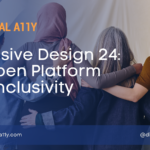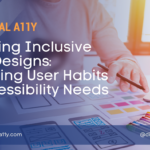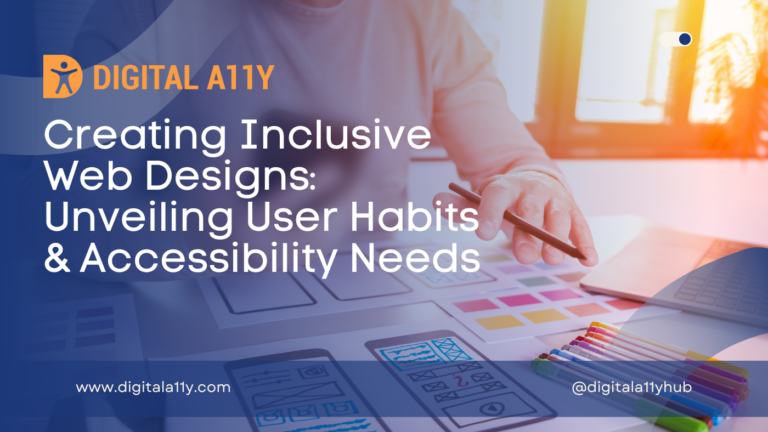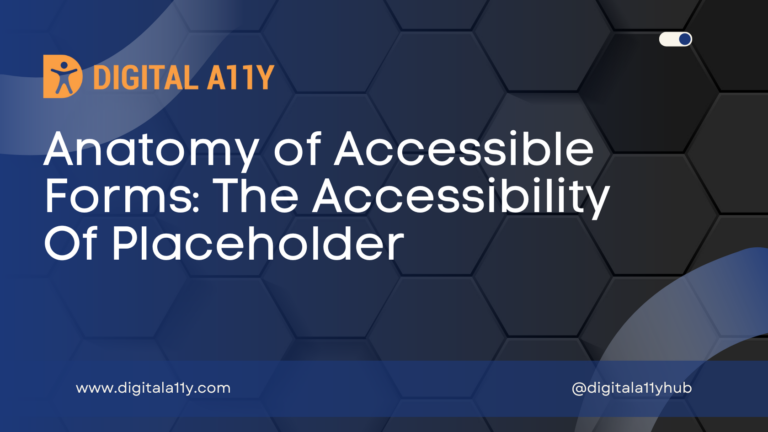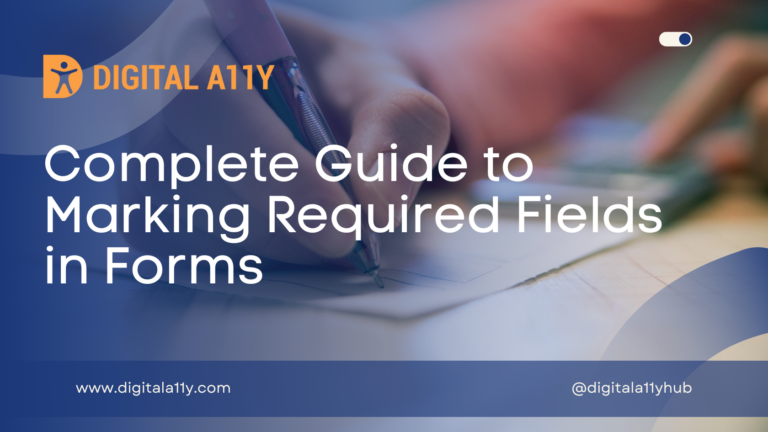How Inclusive Web Design Affects User Experience

The web and the internet are some of the most important resources that have helped man in virtually every aspect of life – education, entertainment, information, relationships, healthcare, government, finance, etc. As technology continues to advance, the possibilities of what can be achieved on the web are endless. Hence, it is particularly important that the web is equally accessible for all users regardless of their disabilities.
By International Web standards, web accessibility ensures that website tools and technologies are accessible to people with disabilities- cognitive, auditory, neurological, visual, speech, and physical. In addition to making the web accessible for everyone, web accessibility practices help boost other areas that affect web performance, such as search engine optimization, mobile web
design, and overall user experience.
What is Inclusive Web design?
Inclusive web design is a paradigm of web design that aims to remove all biases and assumptions from a website, making it accessible to all users, including abled users and users with impairments. This way, users are not held back from having a great user experience due to disabilities, demographics, or other temporary or permanent setbacks.
Inclusive web design offers users alternatives to complete task depending on their choices and the option that best suits their convenience. A typical example that portrays this is the swipe to delete option on IOS messages together with an edit button that allows users select multiple items before deleting them.
On the other hand, designing a website and ensuring the user can take control of the site with the keyboard, such as hitting the tab button on the keyboard to navigate through elements on the webpage without needing a mouse, is an example of good website accessibility.
Accessible web design and user experience (UX) design are two critical aspects of an inclusive website. While accessible design ensures there are no barriers for people with disabilities and impairments, UX design focuses on creating interfaces that validate how well a user engages with the site.
In order to meet the requirements of an inclusive website, designers must consider the following factors when designing for inclusivity:
- Impairments related to sight, hearing, or touch.
- Disabilities affecting thoughts or speech.
- Demographic limitations that prevent users from maximizing the site’s engagement.
- Internet connectivity, hardware, and technical constraints.
- Language barriers and socioeconomic differences.
Also, components on the website used to facilitate communication and passing information, such as forms, PDFs, and documents of various formats, must be accessible to all users. Therefore, document remediation must be considered as it is an important aspect of inclusive web design principles.
Inclusive Web Design Examples
The principles of inclusive web design play a crucial role in helping designers create websites that can be used by different groups of users. A good designer must balance convenience with choice. For example, swipe-based functionality is not always accessible for everyone. Instead, providing a button or link, makes the feature accessible to all users.
Furthermore, when watching videos on a website, especially in a noisy area, it could be difficult for the user to hear the audio properly. In this case, closed captioning would make the website more inclusive and allow for a better user experience, even in very lousy places.
Offering the users, a variety of options is a key principle in web design inclusivity. When a user has several options to choose from, it is easy to select the one that best suits them, given their current circumstance. Offering users with hearing impairment an option for a transcript provides a real-time audio translation, which is a good example of an all-inclusive website.
Inclusive Design vs. Accessible Design: What you should know
Inclusive design and accessible design are two design philosophies that are capable of appealing to the widest range of audiences. While inclusive design and accessible design have a few similar principles, they are not entirely the same.
Key differences
- The purpose of inclusive design (process-based) is to provide a satisfying user experience for users from different backgrounds, abilities, and experiences with the web. Accessibility (outcome-based), on the other hand, focuses more on the outcome and determines how useful, such sites are to users with disabilities.
- Accessible design is governed by a list of guidelines to make a product accessible to users with disabilities. Inclusive design prioritizes design testing and a novel approach that gives everyone a good user experience.
- Inclusive design focuses on the information and content, and well it will be comprehended by the user. Accessible design is more about the architecture of the information, how it is presented, and the means through which the information is communicated to the users.
- The principles of design inclusivity aim at making products and services user- friendly for a diverse range of users, thereby eliminating all forms of exclusion.
Accessible design creates products to cater to users with diverse abilities based on established design rules.
Similarities
While the principles of design inclusivity and accessibility differ in their distinct approach to design, they both share certain similarities as well.
- The principles of website inclusivity and accessibility work collaboratively to ensure features and functionalities of a website can be used by the widest range of users regardless of their abilities or other diverse characteristics.
- Inclusive and accessible web design considers the fact that there are users with disabilities who are entitled to get the same quality user experience as their abled counterparts.
- There is potential for both design philosophies to adapt to growth and technologies to make browsing the web easy and accessible by every user.
How does Inclusivity in Web Design Affect Usability?
A website is termed usable if it can be used by everyone, which is the core of inclusive web design. Websites are designed and developed to solve users’ problems. Creating a website that does not abide by inclusive web design principles would be rather counterintuitive as that defeats the purpose of making the website available to the widest range of audiences, as it ought to be.
Inclusive web designs follow the KISS (Keep It Simple, Stupid) design principle, which ensures all complexities in a system are avoided, as simplicity for all users guarantees the greatest level of user satisfaction.
An inclusive website will appeal to a bigger audience, lead to better user interaction and ultimately be more profitable to the owner of the website. There could be no disadvantage to creating an inclusive web design unless the designer considers taking time to get a quality job done a disadvantage.
Integrity and Equality
A website designed with the satisfaction of all users in mind creates equality in the user experience of all users and eliminates all biases that could possibly be involved. Website equality would be better understood by an example. One principle of accessibility that must be followed when adding images to a website is the use of Alternative text- this describes the functionality of the image on the page.
To all abled users, when the content of the site loads in the browser, the image loads as well. In the event that the image fails to load, the alternative text serves as a written text in place of the image. For visually impaired users, the alternative text is read aloud by screen users to help them better understand the content of the page. Similarly, presenting data on a website could be done in a variety of ways, such as tables or infographics. These accessible alternatives contribute the overall user experience on the website and make it friendly for users of any kind.
Improved SEO and Broad Marketing.
A website that incorporates the principles of accessibility and inclusivity will turn out to be well organized semantically, content-wise, and more. This will not only boost user experience and usability but make the site rank high on search engines by appearing on the first page of the search results. The more accessible a website is, the more visitors it is likely to have, making it
accessible to an even broader market and audience.
Conclusion
We live in a web-savvy world, and everyone – users, designers, and developers- can benefit from a website created with the principles of accessibility and inclusivity. Website inclusivity and accessibility are more than just legal requirements. They are also attributes of social and ethical responsibility on the part of designers and developers.
A website designed with inclusivity shows that the owners put users first and want all their customers to have an incredible website experience regardless of their abilities.



